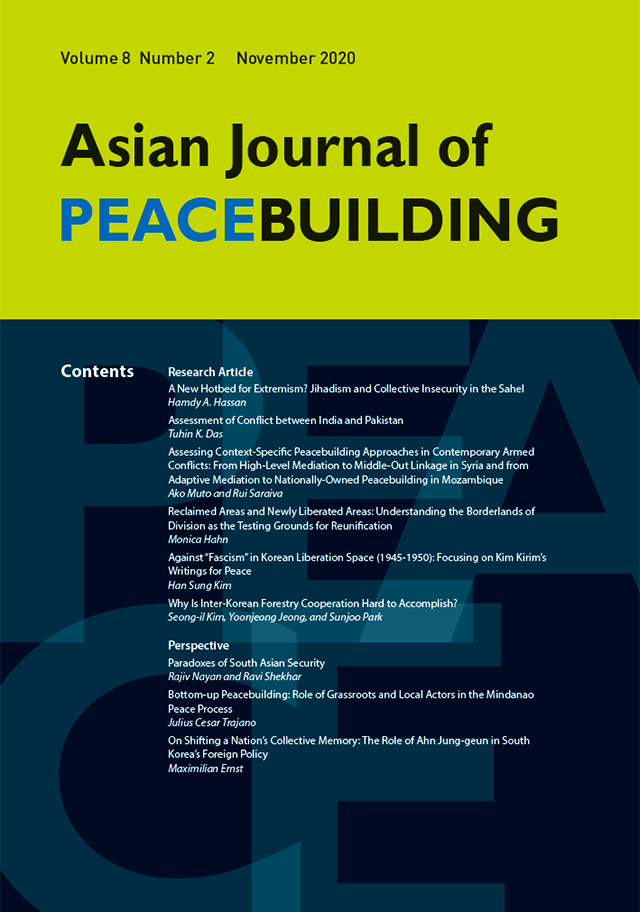This article is a study of the legacy of the Korean War, as well as being a case study on the first instance of regime transition in the Cold War era. This study compares the incorporation of “Reclaimed Areas” (subokjigu) by South Korea with the incorporation of “Newly Liberated Areas” (sinhaebangjigu) by North Korea comprehensively from the aspects of occupation, politics, economics, and national identity. Both South Korea’s transplantation of capitalism in the Reclaimed Areas and the expansion of North Korea’s “people’s democracy” (inminminjujui) took place unilaterally and in a Cold War fashion. Changes to the national identities in each region took place in silence and conformity, paradoxically illustrating the pain and suffering felt while each region was incorporated into an unyielding regime.
Back Issues
Research Article
Reclaimed Areas and Newly Liberated Areas: Understanding the Borderlands of Division as the Testing Grounds for Reunification
Monica Hahn pp. 265-290
PDF Download

